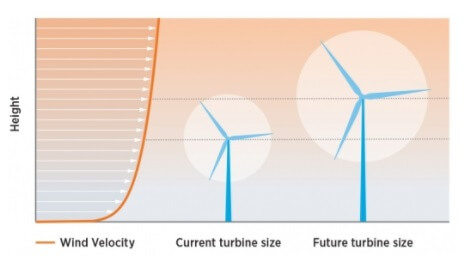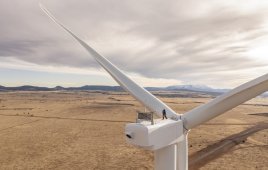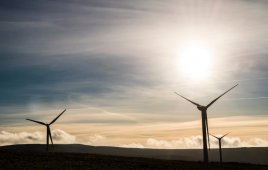New energy science and technological breakthroughs could cut the cost of wind energy in half by 2030—making it fully competitive with the fuel cost of natural gas.
This new finding is outlined in a report by the National Renewable Energy Laboratory (NREL) that examines the future of wind power plants—backed by the supercomputing power of the U.S. Department of Energy’s (DOE’s) national laboratories.
It’s part of DOE’s Atmosphere to Electrons initiative, which focuses on maximizing efficiencies at the plant level (i.e. how wind turbines interact with one another and the atmosphere) rather than treating each wind turbine as an individual unit. The next step is for DOE to apply high-performance computing to this grand challenge of better understanding the complex physics that control electricity generation by wind plants.
Wind plant of the future
According to NREL, the wind plant of the future will use a collection of technologies that allow wind power plants and the turbines within them to not only respond to the atmosphere as an efficient, integrated system, but also to control the airflow within the plant to maximize power production. This approach is made possible by recent advances in supercomputing technology, which turns large sets of atmospheric and wind turbine operation data into a high-fidelity model. Industry can then use these government-driven scientific insights to design new wind turbine components, sensors, and controls. Future wind power plants would include:
- High-fidelity modeling and state-of-the-art sensors to accurately estimate wind power plant energy production, reducing uncertainty and increasing predictability of electricity production
- Integrated wind plant design, real-time active control of turbines, and operational strategies to increase reliability and extend turbine lifetimes
- Innovative design of wind turbines and components such as rotors and drivetrains to optimize performance and enhance energy capture, including larger rotors and taller towers to capture higher-potential wind energy in the Earth’s upper atmosphere; and
- Controllable, dispatchable, and predictable grid support services for grid resilience and stability, including precise forecasting of wind energy production for short-term grid operation and planning.
Filed Under: Construction, News, Towers, Turbines





